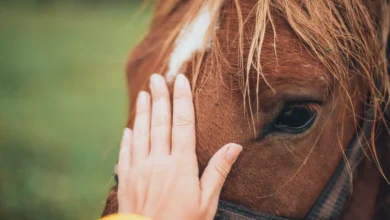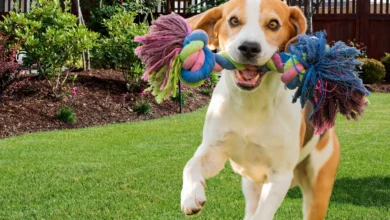
Because your fur baby deserves peace of mind too—with the right psychological tips for pet anxiety!
Have you ever come home to a shredded pillow, a puddle by the door, or a mysteriously anxious pet hiding under the couch? Same. If you’re reading this, chances are your dog’s more nervous than a cat at bath time—or your cat’s convinced the vacuum cleaner is out for revenge.
Pet anxiety is real. And as pet parents, it’s our job not just to love and feed them, but to help them feel safe too. The good news? There are plenty of natural, psychology-backed ways to ease your pet’s nerves—no sedatives needed.
Let’s dig into some psychological tips for pet anxiety that are easy to try and, best of all, naturally comforting.
What Causes Pet Anxiety?
Before we go all zen guru on your furry friend, it’s important to understand what triggers anxiety in pets. Just like humans, pets have their stressors:
- Separation from you (a.k.a. the human who controls the snack supply)
- Loud noises (fireworks, thunder, vacuum cleaners—yikes!)
- New people or animals
- Changes in routine or environment
- Past trauma or neglect (for rescue animals)
Even small shifts, like moving the litter box or switching feeding times, can trigger anxiety in sensitive pets.
The Power of Psychology: Think Like Your Pet
Here’s the heart of it: pet anxiety isn’t just behavioral—it’s emotional. That’s where psychology comes in. If we understand how our pets process the world, we can help soothe their stress with a more natural approach.
(1) Establish a Calming Routine

Predictability = Peace
Imagine being a dog and never knowing when dinner is or if you’ll be left alone for hours. Scary, right?
Creating a consistent daily routine—for feeding, walks, play, and even cuddles—can help your pet feel secure. This stability helps their nervous system settle down, like a gentle reminder that “Hey, things are under control here.”
Pet psychology tip: Pets associate patterns with safety. Even the sound of your keys at the same time every morning can become a comfort cue.
(2) Use Music and Sound Therapy
Yes, pets vibe too!
Studies show that certain types of calming music (like classical or ambient nature sounds) can lower cortisol levels in dogs and cats. Think of it as a spa day for their ears.
Pro tip: Look up “dog anxiety playlists” or “cat calming sounds” on YouTube or Spotify. Bonus points if you play them during thunderstorms or when you leave the house.

(3) Create a Safe Space
A cozy hideaway is better than a timeout corner.
Pets need a “comfort zone” just like us. A designated safe space—like a crate, cozy bed, or blanket fort—can help ease anxiety during stressful moments.
For my dog Max, it’s his crate with a worn T-shirt that smells like me. For my friend’s cat, it’s under the couch (don’t ask—she’s dramatic).
Psychological tip for pet anxiety: The scent of their favorite human is grounding. Smell is a powerful memory and safety trigger.
(4) Positive Reinforcement & Encouragement
Good vibes only.
Never punish anxious behavior. Instead, reward calm responses. Got a dog who hates the car? Start with sitting inside it calmly, treat in hand. Same for cats and the dreaded carrier.
Small wins lead to big results.
Try clicker training, verbal praise, or simply giving treats when they don’t freak out. These psychological tips for pet anxiety work by reinforcing calm behavior through positive experiences. Encouragement builds confidence—and confidence calms the anxious brain.
(5) Natural Calming Aids
Nature has your back.
There are gentle, natural options to ease anxiety:
- Pheromone diffusers (like Feliway or Adaptil Natural Calming Aids)
- Herbal treats with chamomile, valerian root, or L-theanine
- Lavender essential oil (only in pet-safe diffused form—not on skin!)
Pet psychology shows these subtle changes can help lower heart rate and promote relaxation—especially during separation or travel.
(6) Practice Short Absences
For pets with separation anxiety.
Start with mini departures: leave the room for 30 seconds, then a minute, then five. Return each time like nothing happened.
This desensitization helps pets realize that you always come back. You’re not abandoning them to live with the squirrels.
Repetition = trust. Trust = less anxiety.
(7) Be Calm Yourself
Pets are emotional sponges. If you’re anxious or frustrated, guess who’s picking up on that? Yup—your four-legged shadow.
Try deep breathing, gentle movements, and a calm tone during stressful times (even if you’re internally panicking about the spilled kibble or chewed slipper).
Real Talk: My Dog Max and His Fear of Thunder
Let me get personal for a second.
My golden retriever Max turns into a 70-pound lapdog at the first rumble of thunder. One day, during a particularly loud storm, I tried something new: dimmed the lights, turned on calming music, lit a lavender diffuser, and invited him into a blanket fort with me.
He sighed, curled up, and actually fell asleep.
Since then, that routine has become our go-to—and Max no longer panics. It wasn’t magic, just a blend of love, routine, and a little psychological insight into pet anxiety.
Quick Checklist: Natural Calming Toolkit
Here’s a handy summary to bookmark:
- Daily routine
- Calming music
- Cozy safe space
- Positive reinforcement
- Herbal calming treats
- Gradual desensitization
- Your own calm presence
Final Thoughts: Love + Psychology = Peaceful Pets
At the end of the day, your pet doesn’t need perfection. They need connection, understanding, and some comfort when the world gets loud and scary. By using these gentle, psychology-inspired methods, you’re not just managing pet anxiety—you’re building trust.
And hey, you might even learn a little about your own emotions along the way.



